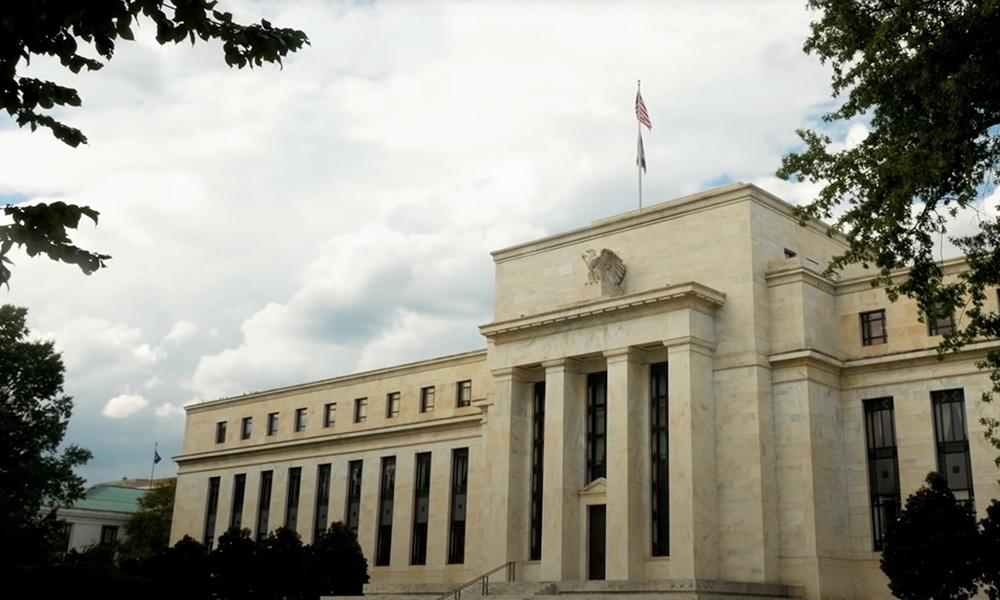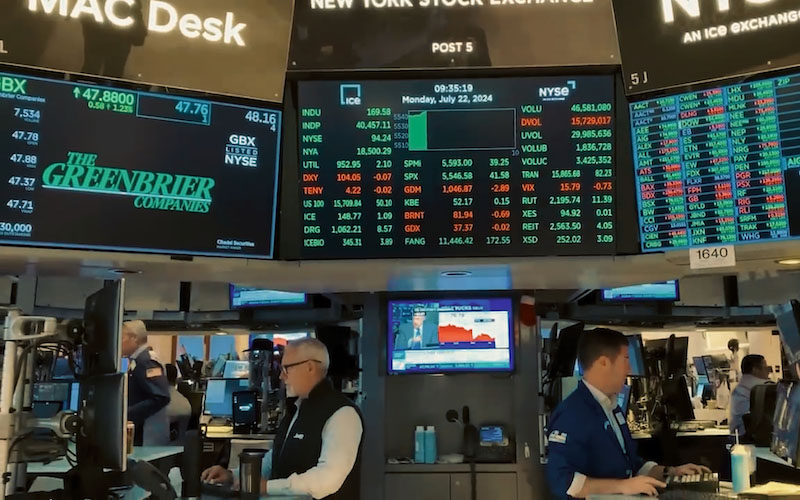Is this week's Fed rate cut a foregone conclusion? Internal divisions escalate, and the jobs data black hole and QT finale are fueling market volatility!
2025-10-29 08:58:40
The market believes there is a near 100% probability that the Federal Open Market Committee will approve a second consecutive 25 basis point (0.25 percentage point) cut to the federal funds rate. Currently, the target range for the overnight lending rate is 4%-4.25%.
In addition, policymakers are likely to discuss the future path of downward adjustment, the challenges posed by the lack of economic data, and the timetable for ending the reduction of their portfolio of Treasury bonds and mortgage-backed securities.
Underlying all these considerations is the growing divergence of opinions regarding the future direction of monetary policy.

“They’re at a point in the policy cycle where there’s a real split between those who say we may cut rates but I’m not ready to cut again and those who say despite the risks, now is the time to do more,” said Bill Inglis, a Yale professor and former Fed director of monetary affairs. “There are those who want to cut now and those who want to wait and see more data.”
Based on recent statements and mainstream opinion on Wall Street, newly appointed board member Stephen Milan is likely to vote against a larger reduction, as he did at the September FOMC meeting.
Meanwhile, Cleveland Fed President Beth Hammack, Dallas Fed President Lori Logan, and St. Louis Fed President Jeffrey Schmid have expressed reluctance to further significant rate cuts, though it's unclear whether they will vote against any cuts this week. Only Milan actually dissented in last month's 11-1 committee vote for a 25 basis point cut; he preferred a 50 basis point reduction.
Federal Reserve Chairman Jerome Powell will attempt to bridge the divide, having recently expressed concerns about the labor market in a speech that hinted at an endorsement of the October downward revision.
Investors will be watching the Federal Reserve chairman, who will step down in May 2026, for guidance on mainstream opinions.
“I expect him to try to take a middle ground and not reveal too much in December,” Inglis said, referring to the next policy meeting after this one. “I don’t think he wants to be locked into a December rate cut. But on the other hand, he seems concerned about the outlook for the labor market and real activity, so he doesn’t want to appear hawkish.”
According to the CME Group’s FedWatch tool, the market now also considers a December cut to be close to certain, so much effort will be needed to convince Wall Street to stop expecting further easing from the Fed.
Concerns about employment
One major reason officials are inclined to lower the forecast is concern about the labor market. Even in the absence of data, there are clear signs that inflation is slowing, although layoffs do not appear to be accelerating, based on state-level unemployment claims data (which continue despite the federal government shutdown).
Luke Tilly, chief economist at Wilmington Trust, said that concerns about employment could actually lead the Federal Reserve to keep lowering its forecasts until 2026.
“We expect a 25 basis point cut on Wednesday, followed by another cut in December, and then cuts in January, March and April,” Tilly said. “This would bring rates down to what we consider the neutral range, between 2.75% and 3%.”
Federal Reserve officials indicated in September via a dot plot that they would not reach a neutral interest rate—one that neither promotes nor inhibits growth—until 2027, and even then it would be 25 basis points higher than Tillie's forecast.
However, he believes the Federal Reserve has no choice but to respond to the weakness in the labor market, especially as it poses a challenge to the surprisingly strong economic growth expected in the second half of this year.
Although inflation remains well above the Federal Reserve's 2% target, concerns about employment have taken over more of the Fed's attention. The Bureau of Labor Statistics reported last week—the only official data released during the shutdown—that the annual inflation rate, as measured by the Consumer Price Index, remained at 3% in September.
The challenge of data scarcity
In addition to the CPI report, central bank officials also face the additional challenge of a data "power outage" that accompanies the government shutdown.
“When you can’t get the data for at least one of your goals, it’s very difficult to formulate policies to achieve both goals…” Tilly said, referring to the Fed’s dual mandate: maximizing employment and maintaining price stability, as well as the September nonfarm payroll report that was missed due to the shutdown.
“I expect they will convey more uncertainty about the future path, and they must be prepared to shift and maintain interest rates, if necessary, or lower them more quickly when the data is finally available,” Tilly said.
Finally, markets will seek a clearer answer regarding when the Federal Reserve will stop shrinking its $6.6 trillion balance sheet, which consists mostly of Treasury bonds and mortgage-backed securities. This process, known as quantitative tightening (QT), involves allowing the proceeds from maturing securities to roll over instead of being reinvested as usual.
In a recent speech, Powell stated that the Federal Reserve hopes to be drawing closer to ending QT. While financial conditions remain generally robust, there are recent signs that short-term markets are tightening. With the Fed's overnight funding facilities nearly exhausted, officials are likely to signal this week that QT is in its final stages.
Market commentators are divided on whether the Federal Reserve will announce the actual end of the program or signal a future termination date.
Tilly said, "There are signs that they are nearing the bottom in terms of reserves, and you could say there is actually some tightening in terms of liquidity. So that's why I expect an announcement, if not action."
- Risk Warning and Disclaimer
- The market involves risk, and trading may not be suitable for all investors. This article is for reference only and does not constitute personal investment advice, nor does it take into account certain users’ specific investment objectives, financial situation, or other needs. Any investment decisions made based on this information are at your own risk.





















